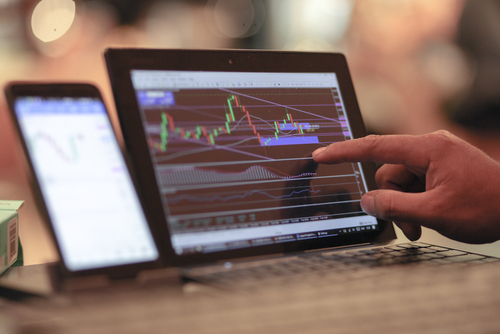While studying the brokerage industry, did you encounter the forex A/B-book model? Perhaps you have been trying to decide which models to use for your brokerage business.
As a trader, forex trading appears quite simple: click a button to open an order and wait for the screen to display confirmation of the transaction. What is the mechanism behind it?
Trading transactions can only be executed after the trader’s transaction is completed: if someone buys an asset, it must be sold by someone else before it can be executed. Through different broker operating technologies, client orders are delivered to the market in two different ways.

This article will teach us how A-book and B-book broker models differ. In broker operating technology, A-Book models are most commonly used. The advantages and disadvantages of each are unique.
A-Book forex brokers
Which forex brokers are associated with A-book? The forex brokers in this category routinely allocate their clients’ orders to interbank markets or other external execution venues. In essence, the brokerage acts as a source of liquidity for their clients’ orders and transfers these orders to third parties for fulfillment.
These entities facilitate these transactions. STP forex brokers are the most similar brokerage models to A-book. The point is that market makers do fulfill A-book orders regularly.
Brokers who use the A-book fulfillment model do so for several reasons. STP brokerages usually do not have any problem with this. It is inherent like these brokers that they never fulfill orders in-house.
The interbank market is always used to place orders. Brokers make money through spreads and commissions charged on the buy-sell sides of transactions. Orders cannot be fulfilled in-house due to a lack of motivation.
When market makers use their dealing desks to fill orders, the primary motivation is to avoid risk in their positions. A market maker often takes the opposite side of a client’s position.
95% of retail forex traders lose money, so market makers are very profitable from their counterparty operations. It is this which defines A-book operations.
B-Book forex brokers
Now let’s talk about the B-book forex brokers. There is always a B-book system operating with market makers. Have you heard the statistic that 95% of traders fail to earn any profits from their forex trading?
The broker’s dealing desk will fulfill these traders’ orders in-house through the B-book liquidity bucket. B-book forex brokers usually fulfill these orders with their trading desks, acting as counterparties to their clients’ trades.
In some cases, such brokers may use a “dark pool” to disguise the actual location of where orders are fulfilled.
Differences between the A-Book and B-Book forex brokerage process
Forex brokerage models A and B differ primarily in handling client accounts. The A-book utilizes interbank market execution for client orders, while the B-book processes orders internally without utilizing the interbank market.
A-book: In this book, you trade with the banks at transparent prices and have various options. Brokers provide access to interbank markets and software.
B-book: It appears you are dealing with a facilitator.

Bottom line
Neither the A-Book nor B-Book business models can guarantee a successful company or a profitable transaction. Your ability to apply these models professionally determines how much you gain from them. Those models are merely tools for doing business. A forex brokerage company can present you with almost limitless opportunities for success and financial stability if you approach it correctly, learn patience, and utilize suitable business models.


